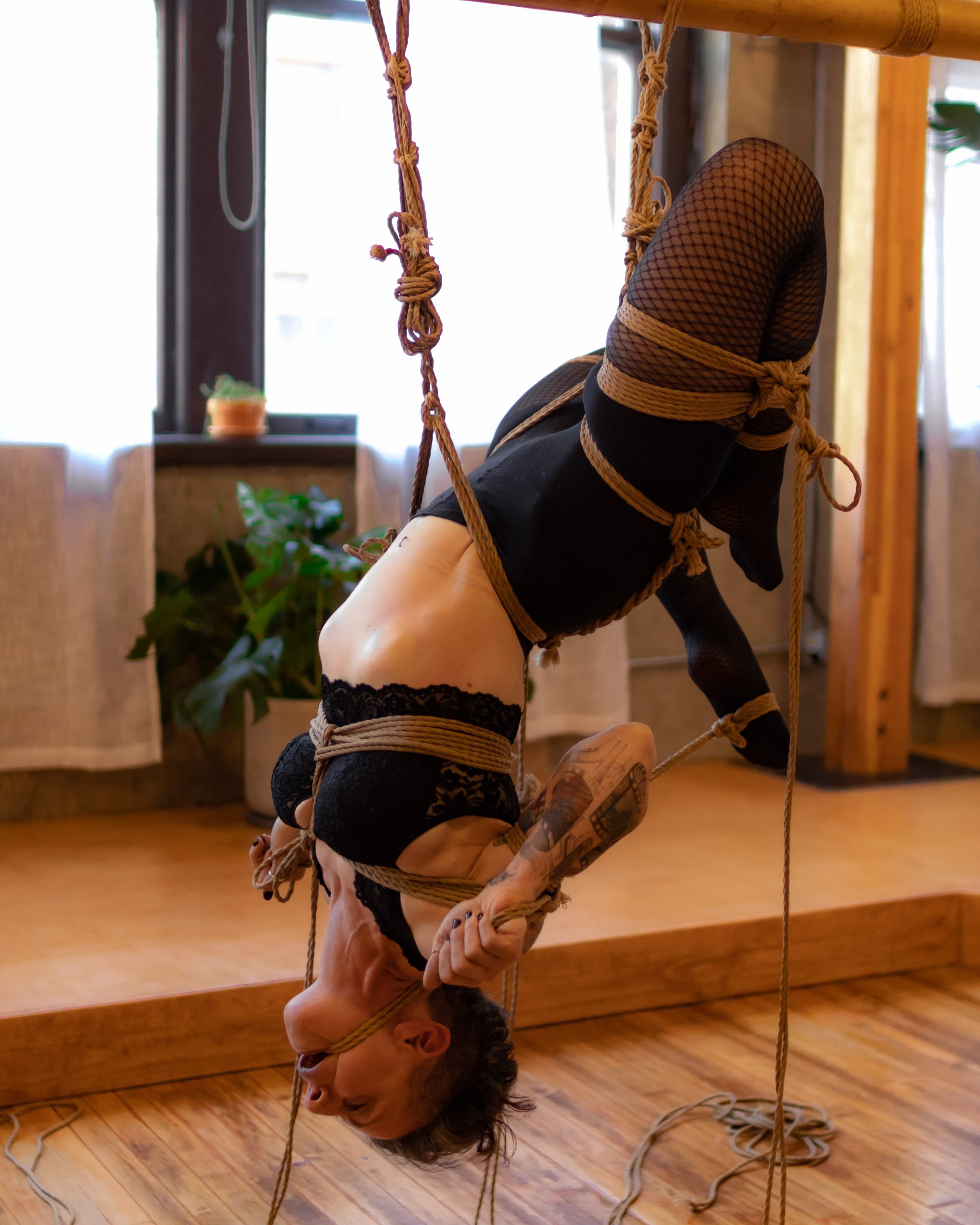by goodmosttimes (originally published on FetLife; October 2017)

Disclaimer
I believe bottoming* can help you be a better rope top* by making you both more knowledgeable and more empathetic about the bottoming experience. But I started as a bottom, I am a proud switch, and a vocal advocate of bottoming education. So my perspective may not be the same as that of other people.
* NOTE: I use the word “bottom” to mean “person in rope” and “top” to mean “person tying”. These do not necessarily refer to sexual orientations, nor do they indicate specific Dominant or submissive roles. Those definitions are very personal and I leave them to be defined by each person and within every unique dynamic.
Things you can learn by bottoming:
- How ties feel
- Variations in tension, placement, what it’s like to get pinched, have rope burn, etc. as well as some of the psychological impacts being in rope can have on you.
- Also, how not to get hit in the face by the rope ends. (Hint: don’t watch super closely as the rope is being applied to your body!)
- I know quite a few tops want to know what the thing they’re asking their partner(s) to do feel like before they ask them to do it.
- The importance of active bottoming
- How even though you may be the one “submitting” to the rope, you don’t relinquish your ability to make adjustments to your own position.
- Remember, you still control whether you:
- breathe and how deeply (usually, especially in a practice/lab context)
- make micro adjustments
- communicate (see next point)
- How to give and receive constructive feedback and how important it is
- The ability to communicate when something is off (or is great) is key to having a successful rope session.
- People who are able to give this feedback efficiently, in a timely manner, and without judgment (“the line is pinching me on my upper left wrap” vs “why would you pinch me?!”) are likely to have a better time in rope and a better connection with their rope partner(s).
- The rope-wielding partner able to hear this feedback and respond in kind is likely to have a higher rate of repeat partners.
- The names of components of a tie (if you are bottoming for a class or lesson)
- As you watch the demo and then feel the various elements applied, you can learn to identify what the various parts of the tie are called to make your feedback more precise and useful.
- By paying attention to the instructions and asking questions, you can learn quite a lot.
- The importance of untying
- Someone once told me, “it’s all tying, ‘untying’ is just tying in reverse. Put as much care into it as you into going forward. It’s the last thing your partner will remember.” (I credit WykD_Dave for this priceless wisdom.)
- Being the one in the rope, you realize just how crucial this part of the experience is. If the person putting rope on you spends tons of time carefully applying each line and friction, then rushes through to get it all off once they have completed the pattern, you realize the tie was all about the rope and nothing to do with you as a person.
- When the pattern is already finished and it is obvious where the rope goes next to undo it, it’s even easier to focus on your partner. Take advantage of this time to connect.
Things you likely will not learn bottoming:
- How to actually do the ties
- A lot of the construction of the tie will happen behind your back where you can’t see what’s going on.
- Also, a good deal of expertise in tying comes from muscle memory and learning efficient rope-handling techniques. This you can only get good at through hands-on practice. (So if your hands are tied, you’re not getting this practice!)

